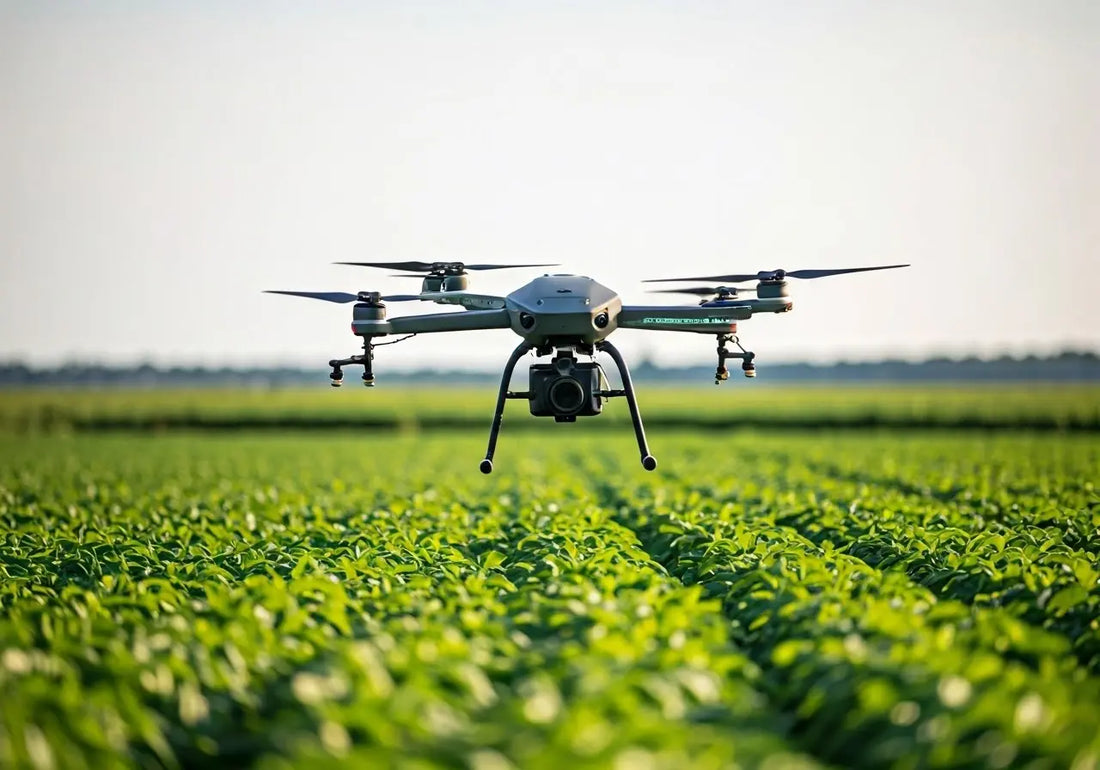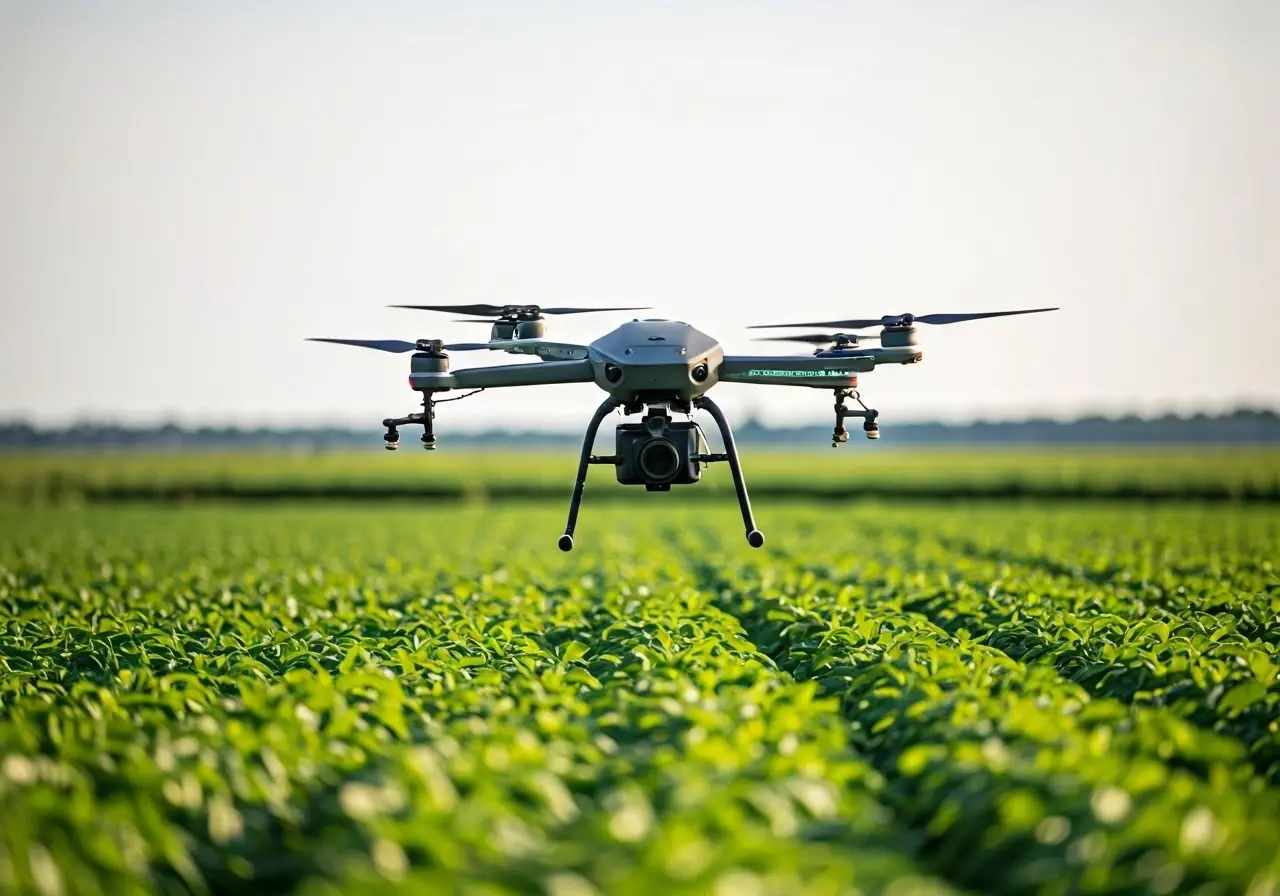
12 Ways DJI Agras Drones Can Revolutionize Your Farm
Share
In today’s fast-paced agricultural world, staying ahead of the curve is crucial. DJI Agras drones offer an innovative solution that can transform how you manage your farm. Designed specifically with farmers in mind, these drones promise efficiency, precision, and ease of use. Let’s explore how they can bring a new level of productivity to your operations.
1. Precision Crop Spraying
DJI Agras drones offer precision spraying capabilities, ensuring even distribution of pesticides and fertilizers across your crops. This reduces waste and ensures that every plant receives the care it needs. By targeting specific areas and adjusting the amount and type of spray used, drones help reduce the risk of chemical run-off, which can harm local ecosystem health. With advanced sensors and real-time data analysis, these drones take the guesswork out of spraying, providing targeted solutions that can respond dynamically to changing conditions within your fields.
2. Efficient Field Mapping
With advanced imaging technology, these drones can quickly map out your fields, identifying problem areas and assisting in better farm management decisions. The use of high-resolution cameras and GPS technology allows for the creation of detailed maps, highlighting variations in crop health, soil moisture, and growth patterns. This information is crucial for farmers wanting to take a proactive approach to field management, helping to pinpoint issues before they become large-scale problems. Moreover, mapping with drones can significantly shorten the time required to survey large areas of land, making this process not only more accurate but also more efficient.
3. Enhanced Pest Control
By using DJI Agras drones, you can target pest infestations directly, minimizing crop damage and reducing the need for widespread pesticide application. The drones are equipped with advanced imaging systems that can detect early signs of pest activity, allowing for quick intervention. Instead of applying chemicals across entire fields, drones enable farmers to localize treatments, thus preserving beneficial insects and reducing chemical reliance. This method not only helps protect the crops but also supports the wider goal of achieving environmentally sustainable farming practices.
4. Improved Water Management
Monitoring irrigation systems becomes simpler and more efficient, leading to the optimal use of water resources and ensuring crops are neither over- nor under-watered. DJI Agras drones can be equipped with sensors that measure soil moisture levels across different parts of a field. This capability allows for the informed adjustment of irrigation plans based on real-time needs, reducing water usage where it’s not needed and directing more resources to areas showing signs of drought stress. By promoting smarter water use, drones help protect this precious resource while ensuring your crops remain healthy and productive.
5. Cost Reduction
Reduced labor costs and efficient resource use mean that integrating drones into your farming strategy can lead to significant savings over time. The reduction in manual labor required for tasks such as spraying or inspection can vastly decrease expenses without sacrificing productivity. Furthermore, the precision offered by drones means fewer resources are wasted, allowing for better allocation of both time and money. In addition, the reduced need for chemical inputs and fuels translates to lower overall costs, making DJI Agras drones a financially smart investment for the future of agribusiness.
6. Time-Saving Technology
The speed and efficiency of drone operations mean more tasks can be completed in less time, freeing up valuable hours for other important farming activities. Unlike traditional methods that may require significant manpower and extended periods to cover large areas, drones can perform these duties autonomously and swiftly. This advantage also reduces downtime often associated with lengthy manual inspections, allowing farmers to reap the benefits of increased productivity. With a shorter turnaround, farmers can focus on strategic planning and pursuing innovations that add further value to their operations.
7. Data-Driven Farming
Drones collect and analyze data that can lead to better decision-making, enabling you to optimize crop yields and farm operations based on real-time insights. The data captured by DJI Agras drones includes high-resolution images and thermal readings, which can be interpreted to assess crop health and soil conditions. By correlating this data with historical performance and weather patterns, farmers can make informed decisions on planting, crop rotation, and resource management. This not only enhances the quality of the produce but also increases profitability by optimizing resource utilization.
8. Support for Sustainable Practices
Utilizing drones for tasks like crop spraying and field mapping supports environmentally friendly practices by minimizing chemical use and encouraging efficient farming. Through precision application and monitoring, drones help reduce the environmental footprint of farming activities by ensuring resources are used where they’re most needed. This targeted approach helps maintain biodiversity and protects soil microbiomes critical to future yields. Additionally, by optimizing inputs and reducing overuse, DJI Agras drones aid in meeting sustainability goals and regulatory requirements, contributing to long-term farm viability and health.
9. Accessibility and Ease of Use
The user-friendly design of DJI Agras drones means that even those new to drone technology can quickly learn and utilize them, making high-tech farming accessible to all. With intuitive controls, comprehensive training materials, and automated features, these drones are designed with the farmer in mind. operators can achieve proficient handling and gain confidence in managing their farm operations autonomously. This ease of use democratizes access to innovative farming techniques, ensuring that smaller farms and individual operators can benefit from the latest agricultural advancements.
10. Versatility Across Crops
Whether you’re growing corn, wheat, or vegetables, these drones can be adapted to meet the needs of a variety of crops, offering widespread utility. The technology behind DJI Agras drones allows for adjustments in spraying patterns, payload capacity, and operation modes based on the specific requirements of each crop type. This flexibility ensures that farmers can tailor their approach to suit different growing environments and crop cycles, leading to better results across their entire farm. This adaptability makes DJI Agras drones an indispensable tool for diverse agricultural applications.
11. Real-Time Monitoring
The ability to monitor your fields in real-time helps in quickly addressing any urgent issues, ensuring that your farm remains productive and efficient. DJI Agras drones provide live feedback and comprehensive data streams, which can be accessed remotely, allowing farmers to maintain oversight without constantly being in the field. This capability is particularly beneficial for detecting issues such as disease outbreaks or irrigation failures early, preventing potential losses. Real-time monitoring ensures that farm management can pivot swiftly to mitigate risks and seize opportunities, maintaining a continuous and streamlined farming process.
12. Expanding Farm Knowledge
With the detailed data and imagery provided by DJI Agras drones, farmers can gain a deeper understanding of their land and develop strategies tailored specifically to their farm’s needs. The comprehensive insights offered by these advanced drones enable farmers to analyze growth trends, soil health, and weather impacts across their properties. This enhanced understanding aids in predicting future challenges and opportunities, fostering a more resilient agricultural model. By integrating this knowledge into day-to-day operations, farmers can continuously improve and adapt their techniques, ensuring a thriving farm for generations to come.

